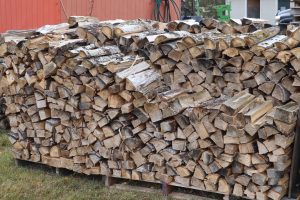
In Spruce Grove, Alberta, a pressing question that many residents are grappling with is, “Why is firewood so expensive?” This blog delves into the multifaceted reasons behind the escalating cost of firewood, a critical source of heating during the region’s long and cold winters. By examining the diverse factors contributing to this trend, we aim to provide a thorough understanding of the challenges faced by the local community in obtaining affordable firewood and to shed light on the complex dynamics influencing its market price.
- Geographical and Climatic Factors Spruce Grove’s geographical position in Alberta presents unique challenges that directly impact the availability and cost of firewood. The region’s climate, characterized by long and harsh winters, escalates the demand for firewood, exerting pressure on local supplies. Additionally, the area’s specific forestry composition and the distance from larger forests can limit the availability of suitable firewood, further driving up prices during peak demand seasons.
- Supply Chain and Logistical Challenges The transportation and logistics involved in delivering firewood to Spruce Grove are complex and can significantly influence its cost. Factors such as the remoteness of wood sources, road conditions, especially during winter, and the cost of fuel for transportation all contribute to the final price. Supply chain disruptions, whether due to environmental factors or other external influences, can also lead to a scarcity of firewood, thereby increasing prices.
- Economic Factors The local and national economy plays a crucial role in determining the price of firewood. Inflation rates, fuel costs, and the expenses associated with labor in the forestry and transportation sectors are all critical components. As these economic factors fluctuate, they directly impact the cost of producing, harvesting, and delivering firewood to consumers in Spruce Grove.
- Environmental Regulations and Sustainability Efforts Environmental policies and sustainability efforts in Alberta significantly affect the firewood industry. Regulations aimed at protecting forests and ensuring sustainable harvesting practices can limit the amount of wood available for firewood, thereby influencing its price. While these measures are crucial for environmental conservation, they can have the unintended consequence of increasing firewood costs.
- Market Demand and Consumer Behavior The demand for firewood in Spruce Grove and surrounding areas varies, but generally increases during colder months. This seasonal spike in demand can lead to higher prices, especially if the supply is limited. Additionally, consumer preferences for certain types of wood, based on factors like burning efficiency and aroma, can also affect market prices.
- Comparative Analysis with Other Fuels When compared to other heating options such as natural gas, electricity, or heating oil, firewood may present a more or less cost-effective solution depending on current market conditions.
- Future Trends and Predictions Looking ahead, the cost of firewood in Spruce Grove is likely to be influenced by a variety of factors including advancements in forestry management, changes in environmental policies, and developments in alternative heating technologies. Predicting these trends will help residents prepare for future heating seasons and possibly mitigate the impact of high firewood costs.
Let’s sum up the multifaceted reasons behind the high cost of firewood in Spruce Grove, Alberta. From geographical constraints and supply chain issues to economic and environmental factors, a complex web of influences shapes the firewood market. Understanding these elements is essential for residents as they navigate the challenges of securing affordable heating resources.
Need more information on how much you should pay for firewood?
Check out our firewood options here.





